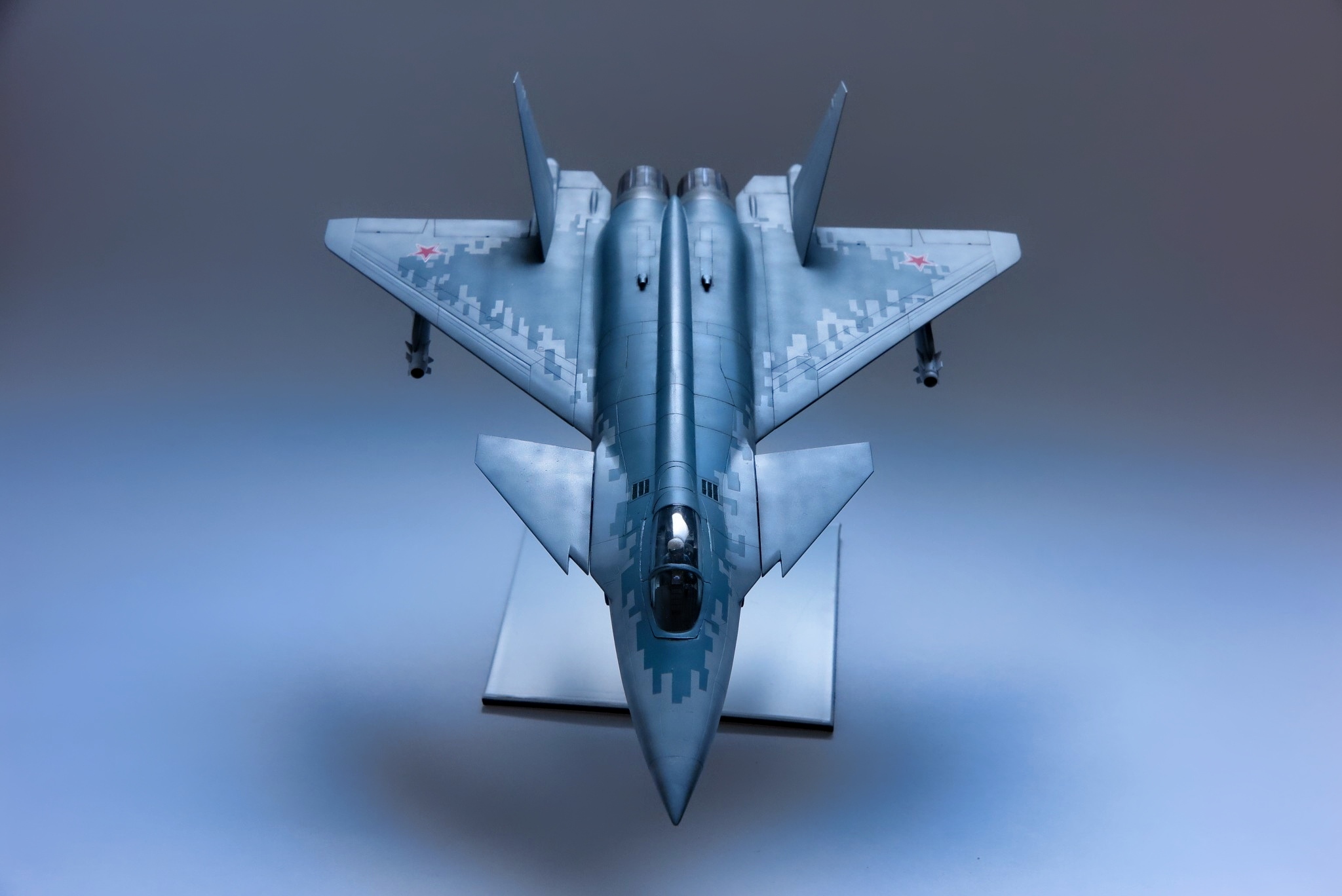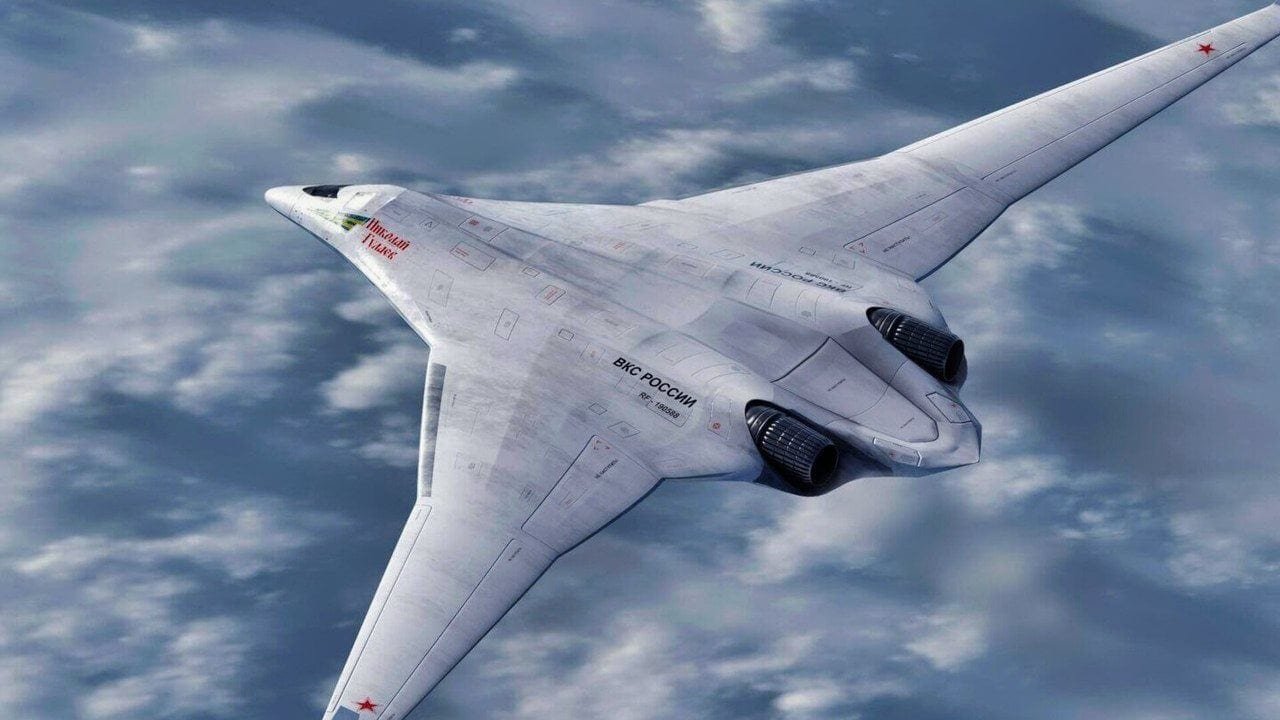Hi, what are you looking for?
By
Published
The Tupolev Design Bureau was known for almost a century as the aircraft development entity in the former Soviet Union responsible for most of the bomber aircraft developed during the Second World War and then on into the Cold War.
When the current Russian Defense Ministry decided almost a quarter of a century ago that the nation needed a stealthy, “flying wing” type aircraft – similar in design to the US B-2 Spirit – the PAK-DA program was born.
The PAK DA: A Failure?
The PAK DA, translated into Russian, means “Prospective aviation complex for long-range aviation.” The codename in Russian that has been given to the program is Poslannik, which means “the envoy.”
Numerous target dates for production and promises for a prototype of this project to be produced and flown have come and gone. But there is still no sign of the aircraft itself. One article from a few years ago stated that the engine for the aircraft would begin testing on board a flying testbed platform by 2020.
If so, it would likely be because this NK-65 engine is supposed to be a derivative of the Tupolev Tu-160’s NK-32 engine and not a “clean sheet” design, significantly shortening the development cycle v. that required for a brand new engine concept.
Having an engine available for a new aircraft program that is ahead in its development of the actual aircraft itself is a rare phenomenon in the Russian aircraft industry. At the height of defense spending in the Soviet era, the famous Su-27 program was delayed and delayed by not having a new engine ready – what eventually became the Saturn/Lyulka SL-31F power plant – and a radar, the NIIP N001, that was also not ready on time.
Early versions of the Su- 27 ended up being powered by the AL-21F3 that was already in use on-board the Su-24 fighter-bomber. The engine had originally flown back in 1955 and was a similar design to the US-made GE J79 turbojet that flew in the F-4 Phantom.
In the same vein, the first batches of the Su-57 5th-generation fighter are being flown with the same AL-41F engine that powers the Su-35, as its next-generation AL-51F is still not available.
Quantum Leap
PAK DA is supposed to be “a 6th-generation bomber” that has all the features of the Northrop B-2 and B-21 models and then some.
That means an aircraft that is stealthy, houses all its ordnance in an internal weapons bay and can also supercruise – achieving supersonic speed without engaging the engines’ afterburners.
Even more spectacularly, this 6th-generation aircraft will have laser weapons, network-centric warfare capabilities, and unmanned flight modes available as the program progresses through various upgrade phases.
Not shockingly, there are more than one or two US military and defense industry officials who harbor a strong dose of scepticism about whether or not the aircraft will ever fly.
Most of them had expressed this assessment long before Russia’s unprovoked and brutal invasion of Ukraine in February 2022.
Uncertain Future for Russia’s Stealth Bomber
The US and its European allies subsequently imposed sanctions on selling an endless list of electronic components, precision machine tools, and composite materials technology, making it more than likely that the PAK DA remains a paper airplane that never takes flight.
At best, it might suffer the same fate as the Mikoyan MFI Project 1.42 which was produced only as a single prototype, made only a few test flights and was never series-manufactured.

MiG 1.44 Russian Fighter. Image Credit: Creative Commons.
MiG 1.44 Russian Fighter. Image Credit: Creative Commons.
Discussing the program with one analyst based in Moscow who has spent decades covering the Soviet – and then later the Russian – aerospace industry and presenting these objectives for the aircraft’s design caused several questions to be raised.
One was how the PAK DA became a “6th-generation” bomber when it started out as a 5th-generation design. “Is being a 6th-gen aircraft in this case only due to endless delays for year after year until 5th-gen is in the rearview mirror, but the technology your original design is based on is still largely unchanged? So, is the 6th-generation label based on the characteristics of the aircraft or is it just a function of the date by which it makes a first flight.”
Another was how the aircraft would be able to accomplish feats not yet seen in US aircraft programs and still being a product of Russian industrial firms. The PAK-DA is supposed to be a cooperative program between several enterprises. These include the Kazan Aircraft Production Association where the Tu-160 long-range bombers were all built, the Novosibirsk Aircraft Production Association where Su-34 medium-range bomber aircraft are still manufactured, and the Beriev Aircraft Plant in Taganrog.
“The only problem with this arrangement is that none of these plants have demonstrated proficiency with the technologies that the PAK DA is supposed to be based on,” said the same analyst. “The more time that goes by, the more the PAK DA seems to be another Russian military fairy tale that will never come true.”
About the Author:
Reuben F. Johnson is a survivor of the February 2022 Russian invasion of Ukraine and is an Expert on Foreign Military Affairs with the Fundacja im. Kazimierza Pułaskiego in Warsaw. He has been a consultant to the Pentagon, several NATO governments and the Australian government in the fields of defense technology and weapon systems design. Over the past 30 years he has resided in and reported from Russia, Ukraine, Poland, Brazil, the People’s Republic of China and Australia.
Reuben F. Johnson is a survivor of the February 2022 Russian invasion of Ukraine and is now an Expert on Foreign Military Affairs with the Fundacja im. Kazimierza Pułaskiego in Warsaw and has been a consultant to the Pentagon, several NATO governments and the Australian government in the fields of defence technology and weapon systems design. Over the past 30 years he has resided at one time or another in Russia, Ukraine, Poland, Brazil, the People’s Republic of China and Australia.
Your email address will not be published.
Copyright © 2025 19FortyFive.



